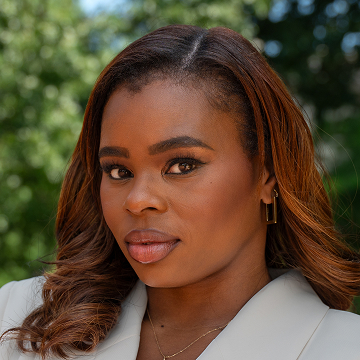Veterans of Barack Obama’s presidential campaigns have been texting lately. Kamala Harris’ presidential campaign is giving them a dose of something they haven’t felt in a long time.
“There’s many Obamaworld group chats and people are saying they’re excited and getting involved,” said Arun Chaudhary, the 2008 campaign’s videographer and new media adviser.
Pete Giangreco, a senior adviser in that first campaign, has literally pulled on his Obama 2008 T-shirt.
“I hadn’t worn it in a long, long time,” he told NOTUS. “And I’m like, ‘You know what? I’m gonna wear my Obama T-shirt because I’m feeling very hopeful.’’’
Pundits and party leaders have remarked that the Democratic presidential enthusiasm, the vibes, have, in just a span of weeks, risen from the lowest point most people can remember to 2008 levels. From the moment Harris looked poised to take over the Democratic ticket, political analysts began asking the question: Could she recreate the successful “Obama coalition”? The chatter was only emboldened by her campaign bringing on veterans of Obama’s campaigns, like David Plouffe, Mitch Stewart and Stephanie Cutter, for senior advisory roles.
In interviews this week with nearly a dozen veterans of the 2008 Obama campaign, NOTUS sought to separate what’s real and what’s crazy from the Democratic feelings right now.
“For those of us who were a part of ’08, you got to tread lightly because ’08 was such a magnificent and spectacular, historic moment. So I’m always reluctant to compare anything to ’08,” said Cornell Belcher, a top Obama pollster and strategist. “But that said, it’s the only comparison that comes close.”
Belcher pointed to astonishing poll numbers showing Harris erasing Biden’s gaps in voter enthusiasm among younger voters and voters of color in a matter of days. In pollster-speak, he described her “thermometer ratings,” a measure of positive or negative feelings toward a candidate. Harris’ are still not quite where Obama’s were among Black voters. “She’s as close to Obama’s thermometer rating right now as I’ve seen any Democrat since Obama,” Belcher said.
The world was different in 2008 and the campaign was different, the veterans hasten to add. A massive financial crash led many Americans to slough off partisanship and back the candidate representing change. Obama’s campaign began as an insurgent bid in 2007 that steadily grew more and more powerful as the months went on. That’s a momentum that provided opportunities not available to Harris, who has a comparative nanosecond to share her vision with the country and convince voters she can make good on it.
“We’re on a different time frame than we were. And the vice president is not an insurgent. She’s the vice president of the United States,” said Alan Solow, an early member of Obama’s 2008 finance committee and national co-chair of Obama’s 2012 reelection bid. “It’s different, but I think in other senses, it’s very similar. I think people find her inspiring, refreshing. She’s brought now a real emphasis on talking about the future and looking forward rather than looking backwards, which was a big hallmark of the Obama campaign.”
Many successive campaigns have tried to assume the mantle of that first Obama run, leading to grumbling pushback from ’08 veterans who say the imitation is often an unflattering look.
“When you had a personality like Barack Obama’s, it was like, let’s get the cameras in close. Let’s make this real. You know, we can sort of make this, like this running documentary with us and the American people, and we’re able to do that,” said Chaudhary. “When you see that echoed in some of these, like phone call videos that you see happening now, right? It is sort of a bit cringey, and that’s not because of the filmmakers.”
But the Obama veterans are not wincing when asked if the Harris campaign can spur 2008-like momentum. Giangreco said, “For us old folks, it does feel very familiar.”
The dynamics are not the same. Polling in early August 2008 showed Obama up by between 3-5 points, part of a steady lead that disappeared only for a brief period following the debut of Sarah Palin on the GOP ticket. Trump has led the polls (against Biden) for most of the year in 2024, and even with a recent bump for Harris, the race is statistically tied. A polarized nation makes it more difficult to conceive of a swing voter or even a truly neutral independent. The media landscape is different, the population has shifted around and the very style of campaigning now makes 2008’s debate calendar of largely respectful and boring events seem like it happened in sepia tone.
But on the ground where the work is being done in this new environment, operatives who are 2008 vets are also feeling the familiarity. Democrats have already opened field offices for the 2024 campaign in Republican stronghold counties like Lenoir, Cabarris, Johnston and Alamance.
Doug Wilson, a field director in South Carolina for Obama’s first campaign and now a North Carolina-based political consultant, said Obama’s success in bringing out Democratic voters in rural counties led to his victory and could lead to Harris’.
“The campaign knows that the way that Obama won the state in ’08 is by going to counties like Pasquotank to campaign and spread his message of hope and change,” he said. “If we can increase our percentage along the margins in these areas, that will help us with our overall state margin of victory, and that is what Obama did in ’08, and I believe that’s what Harris is going to do in ’24.”
Wilson said the end of Biden’s run and his endorsement of Harris felt a lot like the moment Obama won the Iowa caucuses in 2008. Black voters in the south were activated overnight then, he said.
“It happened in ’08 and it’s happening right now with Harris and that means they’ve been reenergized and engaged,” he said. “People don’t see the impact [Harris] has because the news cycle is moving much faster than it did in ’08.”
Some Democratic operatives have expressed skepticism about Harris expanding the map into states like North Carolina and warned that the high turnout among Black and younger voters that helped power the Obama coalition in 2008 are shiny distractions from a campaign that does not have time to shift focus from the blue wall states of the Midwest. The Obama veterans in the state say they are happy to compare this moment with their past triumph.
But they acknowledge that they have little time to rebuild the coalition of 2008 and a lot of work to accomplish.
“One thing I’ve been saying is we need to get out there and do the work that we used to do,” said Denise Adams, a North Carolina organizer during Obama’s first campaign who served as a delegate to the 2008 Democratic convention in Denver. “These people are not going to be on these Zoom calls. They’re not going to be on Twitter or X; they’re not even on Facebook. You can’t text them, can’t email them. We got to go where they are.”
On Tuesday, Adams is hosting a “Black Women of Forsyth County for Kamala Harris” event. She says it’s not only because Forsyth County has over 37,000 Black women registered to vote but because “they all want to be connected, like we were with Barack. They want to be with people like them and hear how they can get involved in the campaign.”
Chaudhary, who witnessed the assembling and activation of the Obama coalition up close as he filmed the historic bid in 2008, said he hopes the current wave of nostalgia doesn’t prevent Democrats from dreaming up a new history for Harris.
“I hope that we have a more 2024 way to express all these different ways that we can associate together. So it’s not just, you know, around a geographic or an ethnic identity, but we also do have more, you know, trade union bricklayers for Kamala and, you know, babysitters for Kamala and gig workers for Kamala, you know,” he said. “A vision on the kind of new communities we deal with each other, because it’s a different country. It’s a long time ago now.”
A very long time ago for some states, like Indiana — now not even remotely on Democrats’ radar.
“I always choose to be an optimist,” Kip Tew told NOTUS. He then broke out laughing. Tew is the former chair of the Indiana Democratic Party and top adviser to the 2008 Obama campaign’s state operation that, in that year, won Indiana’s 11 available electoral votes. He then wrote a book about it because it was then — and remains — a defining moment of a year that has entered the realm of myth for Democrats.
Indiana is not going to happen for Harris, said Tew. There isn’t the money, the time or the readily gettable electorate in the state now that there was then. The current chair of the state’s Democratic Party, Mike Schmuhl, agrees.
“We’re not a battleground state, and we’re not an expansion state” for the presidential ticket, he said.
But both men said it’s not completely crazy to compare the 2008 moment to the current one. Even if, in Indiana, it’s still pretty crazy. Schmuhl said county parties are reporting a huge surge in volunteers and down-ballot Democrats even in Indiana are feeling the excitement of Harrismentum.
“A mood election, an election that’s about the future, can slice through the electorate in a way that’s very unique,” Schmuhl said. “It may not happen every four years. I think that’s what could happen with Kamala Harris as our standard-bearer.”
“Well, you know, nothing’s exactly like 2008,” Tew said. “But it feels different than ’16. It feels different than ’20.
—
Evan McMorris-Santoro and Jasmine Wright are reporters at NOTUS. Calen Razor is a NOTUS reporter and an Allbritton Journalism Institute fellow.
Correction: This article previously misstated that the Harris campaign had opened a field office in Elizabeth City, North Carolina.
Sign in
Log into your free account with your email. Don’t have one?
Check your email for a one-time code.
We sent a 4-digit code to . Enter the pin to confirm your account.
New code will be available in 1:00
Let’s try this again.
We encountered an error with the passcode sent to . Please reenter your email.



